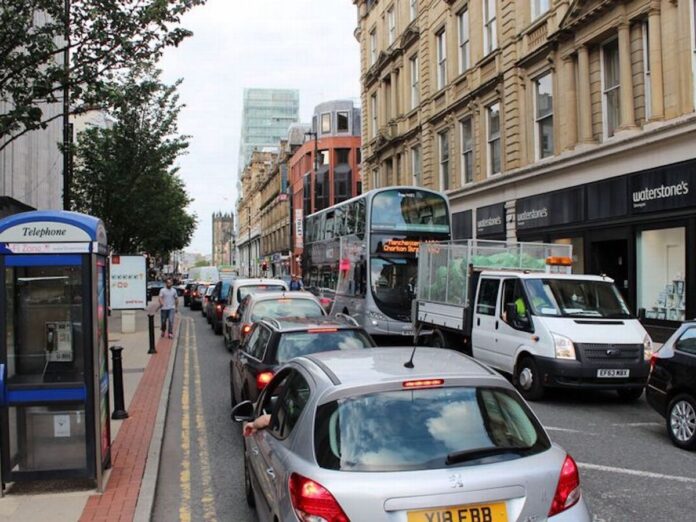The strategy will guide how city centre transport is improved across the next two decades and has been informed by a series of public consultation and engagement exercises, held over the last three to four years.
The vision, which was strongly supported in the latest consultation held last autumn, is for “a well-connected, zero-carbon city centre at the heart of the North, offering our residents, employees and visitors a great place to work, live and visit”.
The central aim is for 90 per cent of all trips to the city centre in the morning peak to be made on foot (including people using wheelchairs, mobility scooters or guide dogs), by cycle, or on public transport before 2040.
The strategy sets out proposals to further improve the city centre’s public transport and active travel networks and reduce car-based trips over the longer term, leading to a cleaner, greener, healthier, inclusive and integrated transport network that supports the city centre’s growth.
Walking will be prioritised as the main way for people to get around a cleaner, less congested city centre, according to the strategy, which will see more people encouraged to cycle to key destinations, while public transport connections will be improved. The city centre will be age friendly and accessible, with all proposed changes taking accessibility, inclusion and the needs of different groups of city centre users into account.
Improvements to the delivery of local bus services will open opportunities for communities across the city region and it is emphasised in the strategy that working with bus operators and passengers will be key to the development of proposed interventions and the timings of their implementation.
The strategy, which has been developed by Manchester City Council, Salford City Council and Transport for Greater Manchester, is aligned with the city’s ambitious aim of becoming zero carbon by 2038 at the latest, the draft Clean Air Plan for Greater Manchester and the 2040 Greater Manchester Transport Strategy. This will enable the city region to realise the Our Network vision, which sets out the ambition for a world-class, modern, integrated and reliable network with seamless connections between different modes.
The latest consultation for the strategy, held from September – November 2020, received more than 2,400 responses. Responding to calls made in the consultation for more pedestrian-friendly space in the city centre, work is to be carried out to explore where such spaces can be developed, while considering the importance of prioritising accessibility for people with physical disabilities and people who are neurodiverse.
Subject to the approval of Manchester and Salford councils and the Greater Manchester Combined Authority, the final strategy is due to be published by the end of March 2021.
Councillor Angeliki Stogia, Executive Member for the Environment, Planning and Transport at Manchester City Council, said: “Manchester is a globally important destination and is growing rapidly, with our population projected to increase by around 15 per cent in the next ten years. If we are to maintain our status as one of the world’s premier destinations, we must create beautiful spaces for people to come and enjoy, while also realising our ambitious aim of becoming zero carbon by 2038 at the latest.
“That means making more and better space for walking and cycling and offering greener, sustainable travel options – including reliable public transport – which will lead to less congestion and cleaner air in a city centre which appeals to a diverse range of people as a place to live, work and visit.
“This strategy for the future of travel into and around our city centre boldly reflects what people have told us they want to see. It will help to set us on a more sustainable pathway for recovery from the pandemic.”
Councillor Mark Aldred, Chair of the Greater Manchester Transport Committee, said: “We want Greater Manchester to be one of the best places in the world to grow up, get on and grow old. This will only be possible by connecting the people of our city region with the places that open opportunities, bring together communities and allow the economies of each of our distinctive boroughs to thrive.







